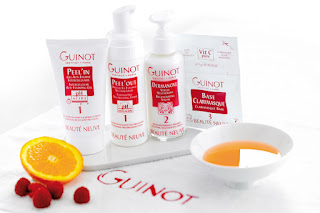Summer Newsletter 2014

Sun
damage can lead to premature aging of the skin, wrinkles, marks, dry skin, and
even skin cancer over time. The hottest season of the year requires careful
thought for your skin even as you enjoy the heat and freedom of summer.
Understand
how the summer sun impacts your skin
Ultraviolet
A (UVA): The longest wavelength of the sun,
this one penetrates the dermis, your skin's deepest layer.
Stay
out of the sun between the hours of 10am and 3pm the hottest part of the day during the summer
Wear protective clothing . A lot of clothing in outdoor stores and fashion stores has a UV protection
Wear protective clothing . A lot of clothing in outdoor stores and fashion stores has a UV protection
·
Wear a hat. Your
facial skin will benefit enormously from a permanent ring of shade over it in
the heat of the sun.
·
Wear sunglasses to protect your sensitive eye skin (and eyes). Eyes are prone to
melanomas and cataracts, and the sensitive skin around your eyes is prone to
fast aging.
Ditch the obsession with a tan. Sunbathing or using a solarium increases your chances of damaging your skin and getting skin cancers.
·
Be careful with fake tan
·
Black skin is vulnerable to sun damage
too, your skin can be two shades darker during summer than in winter
Give your skin a break. By watching the weather over summer, you can work out the days when you won't need to slather on the chemicals
Rinse skin after swimming. This is especially important when you've been swimming in chlorinated
environments as the chlorine can dry out your skin and
for some people it can even result in an allergic reaction.
Avoid spraying perfume on
your skin in the sun. This can permanently stain your skin
when they react with the sun.
Eat
healthy foods. A healthy skin comes from eating well and summer is the ideal time to make
dietary changes for the better.
Examine
your skin regularly. At least
one a month, perform a "mole patrol" to check for signs of sun damage
on your skin. Be especially alert to moles that have changed shape or size or
that hurt, itch, or bleed.



Comments
Post a Comment